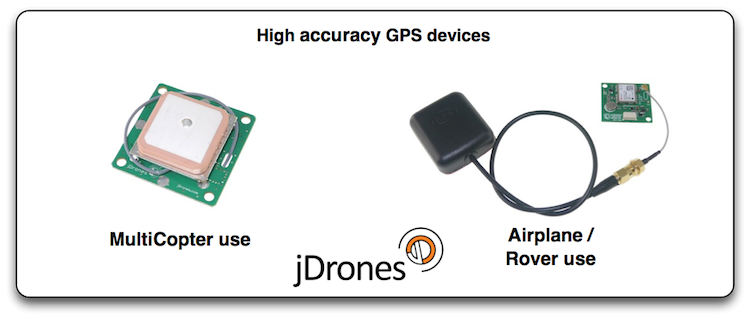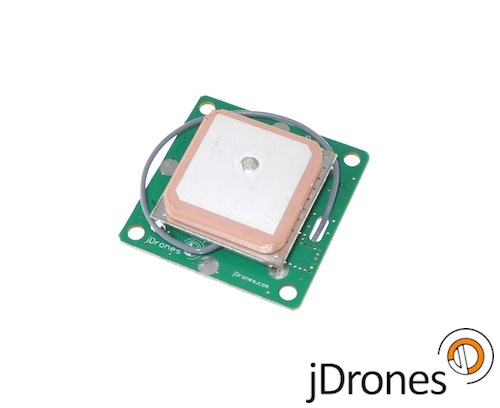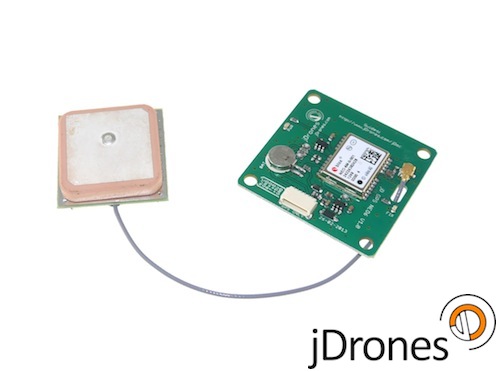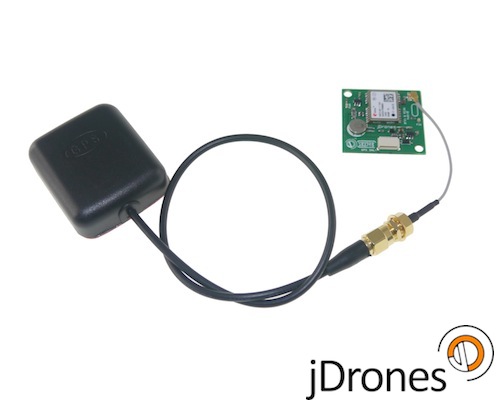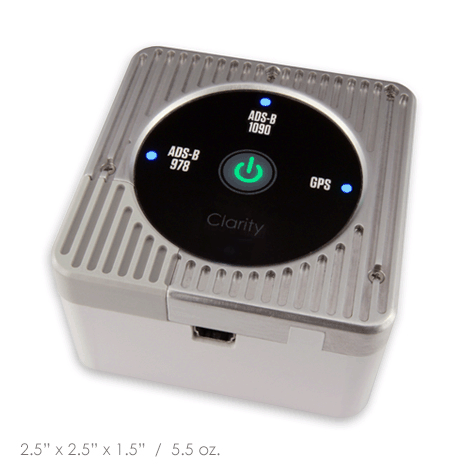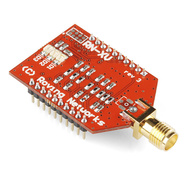As usual the press has lots of questions about the legality of drones, and Jason Koebler in, my opinion, wrote a very factual unbiased article.
All Posts (14049)
Very nice engineering proof of concept from this team at Queen Mary University in London. Hasn't flown yet, but the airframe design is done.
(via sUAS News)
There's a really good piece in this week's Business Week (print, web and Ipad, shown) about DIY Drones.
Here's how it begins:
The Federal Aviation Administration isn’t expected to approve unmanned aerial vehicles for commercial use until at least 2015. Even so, manufacturers are already preparing to jump into the market—relying on the open-source movement for free research and development. Amateur designers and manufacturers are building prototypes at home, then e-mailing or posting the results, often with how-tos that can be completed using part-making 3D printers.
That’s giving far more people, including startups, an opening in the $1.6 billion market for drone design, which will almost double in a decade, according to the aerospace and defense consulting firm Teal Group. Online support is “quite a game-changer,” says Jeff Moe, chief executive officer of open-source 3D printer company Aleph Objects. “You have collaborative worldwide development of hardware and electronics.”
The teamwork extends from pilotless aerial vehicles that spray crops or map coral reefs to those that detect radiation. DIY Drones, an online community founded by former Wired Editor-in-Chief Chris Anderson, has more than 35,000 members and provides free access to thousands of schematics. Its pages receive more than 2 million views per month, says Anderson, whose own company, 3D Robotics, is making use of the crowd-sourced R&D. “We’ve been able to bring this huge amount of energy, ideas, and talent to bear for free that otherwise would have taken millions of dollars,” he says, citing his drone autopilot software, radios, video components, and camera controls among the designs he developed with help from DIY.
According to popular Swedish newspaper 'Dagens nyheter':
Drone associated today with the battlefield but in the future it over the fields as the unmanned aerial craft will make its main effort. Experiment pågår redan i Sverige. Experiments are already under way in Sweden. Civilian drones can provide 100,000-century jobs, according to a recent report.
The concept of drones lead for most reminiscent of deadly attacks in the remote mountainous regions. Now try but the industry itself turn attention from war to the unmanned craft the opportunity to contribute to the national economy.
Over 100,000 new jobs, the civil drönarindustrin contribute only in the U.S. between 2015 and 2025, at least if you believe AUVSI (Association for Unmanned Vehicle Systems International). 2015 is the year of the regulatory and otherwise to be ready to integrate drones in American airspace. The industry's contribution to U.S. growth is estimated in the report to be over 500 billion in the same period.
Orignal links here: http://www.dn.se/ekonomi/framtidens-bonder-flyger-dronare , http://www.dn.se/nyheter/varlden/forarlosa-plan-upploser-krigets-regler , http://www.dn.se/blogg/framstegsbloggen/2013/01/22/dronare-i-mansklighetens-tjanst/
ArduCopter / ArduRover / ArduPlane specific GPS devices with uBlox NEO6 modules are here...
Finally they are here. We have been testing and developing these GPS devices over 4 months and now they are available on jDrones store. These modules are optimized for ArduCopter and ArduPlane use and we have been having great success with these modules. Accuracy on jDrones Quad/Hexa copters is amazing when using these modules. Position accuracy is close to 1 meter and 3D lock times are counted in seconds.
There are two models available.
Get them from jDrones Store:
ArduCopter / MultiCopter uBlox module - 49.95
ArduPlane / ArduRover uBlox kit - 59.95
Availability: NOW
Model One: is specially made for ArduCopter / Multicopter use and it has detachable high patch antenna with 10cm cable so if you want you can always detach antenna from main module and put it on big groundplane.
Top side of ArduCopter / Multicopter GPS
Bottom side of GPS with antenna detached:
Technical detail:
- PCB size 38 x 38 mm
- Mounting holes 32 x 32 mm, M3
- EM406 style connector
- 28 x 28mm detachable high gain antenna
- Battery backup
- I2C bakcup memory
Model Two: is using same electronics as Multicopter GPS does but it has smaller size PCB for easier "inside" mounting and fully waterproof high gain outdoor antenna with strong 3M 2-Side tape. This way you can mount your antenna outside of your vehicle and no need to be worried about rain or anything else while your sensitive electronics is safely inside of your vehicle.
jDrones ArduPlane / ArduRover GPS Kit
There are 3 main parts on this kit: uBlox NEO6 electornics, High Gain antenna unit and IPEX cable
Technical details:
- PCB size 32 x 30 mm
- Mounting holes 37mm corner to corner, M3
- EM406 style connector
- 40 x 45mm High gain waterproof GPS antenna, 30cm cable
- IPEX connector cable 70mm
- Battery backup
- I2C bakcup memory
It is amazing how these small things can change your mission operations. We have been really happy with them and I hope that everyone else will be as happy as we are.
Regards,
Jani / jDrones
Over the last 4 weeks in Canberra (Australia) I've been a running a build-and-fly-your-own-quadcopter workshop, based on the APM.
We had a dozen excited people attend the workshop and all were successfully able to build their quadcopters. The flying lessons were mostly successful - we only had a 25% crash rate (mostly broken arms, easily replaced).
Full documentation for the workshop is available at https://canberrauav.readthedocs.org/en/latest/lessons/quadcopter-workshop.html if others in the community want to run their own workshops, which I definitely encourage!
It's a great way to promote civilian usage and education of multicopters/drones. I've also found these workshops to be massively popular. I only had 12 spots available in this workshop, all of which filled up within 48 hours. I think this demonstrates the massive interest in multicopters.
Finally, a time lapse video of one of the workshop sessions:
Concept Overview
Concept Drawing/Rough Draft Sketch
http://www.airhogs.com/en/products/air-hogs-link
This is a concept idea that I want to share with you folks. It's still very much a rough draft until I receive all the pieces and parts I ordered. So please bear with me and my not so artistic drawings/sketches :)
An ADS B receiver with extra bits I see the future.... this unit for manned aircraft launched today in the USA. Flying with ADS B probably will be a requirement and it looks like most of the parts are in place already.
From Design Engineering:
Building on the work of last year’s bionic creation, the Smart Bird, Festo announced that it will literally launch its latest creation, the BionicOpter, at Hannover Messe in April. With a wingspan of 63 cm and weighing in at 175 grams, the robotic dragonfly mimics all forms of flight as its natural counterpart, including hover, glide and manoeuvring in all directions.
This is made possible, the company says, by the BionicOpter’s ability to move each of its four wings independently, as well as control each wing’s amplitude, frequency and angle of attack. Including its actuated head and body, the robot exhibits 13 degrees of freedom, which allows it to rapidly accelerate, decelerate, turn and fly backwards.
“This unique way of flying is made possible by lightweight construction and the integration of functions: components such as sensors, actuators and mechanical components, together with open- and closed-loop control systems, which are installed in a very tight space and matched accurately to one another,” explained Dr. Heinrich Frontzek, Festo’s head of corporate communications and future concepts.
In total, the BionicOpter’s wings are actuated by nine servomotors. The first, positioned in the base of its main body housing, regulates the frequency of the wing beats, which can be varied between 900 to 1200 times per minute (15 to 20 hz). Additionally, four motors (one at each joint) independently control each wing’s amplitude—or how far it travels per beat—to anywhere between 80 to 130 degrees of deflection.
Each wing can also be rotated up to 90 degrees to control angle of attack and allow the BionicOpter to fly forward, backward or sideways. To save on weight, the robotic insect’s head and body actuation rely on four shape memory alloy structures that move the head side to side and the tail to move vertically.
To coordinate movement and provide flight stability, the BionicOpter is equipped with a series of inertial, positional and acceleration sensors that record wing position and orientation as well as the tilt, speed and direction of the dragonfly’s flight. That recorded flight data is then evaluated in real time by its on-board ARM microcontroller, which calculates all the parameters that can be adjusted mechanically.
According to the company, the robotic dragonfly’s wings are composed of carbon fibre rods reinforcing a polyester membrane while its main body is a combination of aluminium as well as sintered polyamide and ABS plastic. Two 7.6-volt lithium polymer batteries supply power and an integrated wireless receiver allows the dragonfly to be remotely piloted by smartphone.
Like all of Festo’s robotic creations, the BionicOpter is the product of the company’s Bionic Learning Network, a research partnership between the company, universities and development companies, that focuses on creating industrial technology based on design principles drawn from nature.
www.festo.com/bionic
Our demo flight for our Fighting Walrus Radio is shown several times in the Engadget Expand video. We are flying standard 3DR quad hooked up to our iPad for telemetry.
You can see it at:
0:10 (short)
4:07 (longer)
And a brief pan past our booth at 3:04
Thanks again to everyone that help us pull off the flying demo!
Link is here:
http://www.engadget.com/2013/03/28/engadget-show-42/
More than 125 robotics-based events, demonstrations and workshops planned in 50 states to inspire the next generation of innovators in Science, Technology, Engineering and Math (STEM)
BEDFORD, Mass.--(BUSINESS WIRE)-- The fourth annual National Robotics Week, April 6-14, 2013, will bring together engineers, scientists, students and families to share a passion for technology and learning. Working with NASA and iRobot, the National Robotics Week Advisory Council will debut inspirational videos and content at events around the country in a push to excite the next generation of innovators about Science, Technology, Engineering and Math (STEM). A NASA video featuring Bobak Ferdowsi, NASA’s "Mohawk Guy” and flight director for Mars rover Curiosity, along with content focusing on other NASA role models will premiere at science centers, museums and robot events across the country.
Colin Angle, CEO and co-founder of iRobot, discusses robotics with students from the Boston area during National Robotics Week - Lipofsky Photography
More than 125 robot events across all 50 states, Washington, DC and Puerto Rico are planned by robotics industry leaders, institutions and universities, including iRobot, Stanford University, the Chicago Museum of Science & Industry, and Michigan Robotics. According to the STEMconnector’s 2012 annual report, “Where are the STEM Students?” science and engineering occupations are expected to grow at double the rate (20.6 percent) of the overall United States labor force (10.1 percent) through 2018, making STEM education not just important for individual students but a critical path for the entire U.S. economy.
Examples of National Robotics Week events:
- Robot Zoo, Cambridge, MA (April, 13, 2013, 12 to 4 pm ET) – Representatives from iRobot, including CEO and Co-Founder Colin Angle, and the MassTLC will showcase amazing robotics technologies from over 30 New England organizations and educators.
- Robot Block Party, Volkswagen Automotive Innovation Lab, Stanford, CA (April 10, 2013, 1 to 6 pm PT) – Organized by Silicon Valley Robotics, the Robot Block Party is a job fair, robotics exhibition and celebration expected to draw over 2,000 people and more than 30 exhibitors.
- Michigan Celebrates National Robotics Week, National Center for Manufacturing Sciences/ U Michigan, Ann Arbor, MI (April 15, 2013, 9:00 am to 4:30 pm CT) – Michigan, fast becoming a hub for technology growth, will host area companies to show off how the region will help shape the robotics industry.
- MSI Robot Block Party, Museum of Science and Industry, Chicago, IL (April 6-14, 2013, 9:00 am to 4:30 pm CT) - The Museum is going robot crazy again and they’re inviting you to join the fun! MSI will demonstrate several robots from both the U.S. and Japan, offer lectures from top university scholars and hold special workshops and hands-on activities.
For events in your area or to list an event please visit: http://nationalroboticsweek.org/events.php
“National Robotics Week celebrates the many ways robots can improve our lives — they clean homes, protect our loved ones, save lives in hospitals and perform important research throughout the Universe,” said Colin Angle, chairman and CEO of iRobot. “iRobot is proud to have been a part of the National Robotics Week initiative from the beginning and is excited to find new ways to share our passion for technology with students and educators alike.”
Congress established National Robotics Week in 2010 to raise awareness about robots and their important role in shaping the future of education, industry and the U.S. economy. As a founding co-sponsor of National Robotics Week, iRobot actively promotes technology education through its own outreach initiatives, including Starter Programs for the Advancement of Robotics Knowledge (SPARK). SPARK uses the wonder and genius of robots to elevate K-12 students’ interest in STEM subjects.
For more information about National Robotics Week, go to: http://www.nationalroboticsweek.org/.
By Fred Trotter:
Currently, anyone can crowdfund products, projects, causes, and sometimes debt. Current U.S. Securities and Exchange Commission (SEC) regulations make crowdfunding companies (i.e. selling stocks rather than products on crowdfund platforms) illegal. The only way to sell stocks to the public at large under the current law is through the heavily regulated Initial Public Offering (IPO) process.
The JOBS Act will soon change these rules. This will mean that platforms like Kickstarter will be able to sell shares in companies, assuming those companies follow certain strict rules. This change in finance law will enable open source companies to access capital and dominate the technology industry. This is the dawn of crowdfunded finance, and with it comes the dawn of open source technology everywhere.
The JOBS Act is already law, and it required the SEC to create specific rules by specific deadlines. The SEC is working on the rulemaking, but it has made it clear that given the complexity of this new finance structure, meeting the deadlines is not achievable. No one is happy with the delay but the rules should be done in late 2013 or early 2014.
When those rules are addressed, thousands of open source companies will use this financial instrument to create new types of enterprise open source software, hardware, and bioware. These companies will be comfortably funded by their open source communities. Unlike traditional venture-capital-backed companies, these new companies will narrowly focus on getting the technology right and putting their communities first. Eventually, I think these companies will make most proprietary software companies obsolete. Read more…
AGENCY: Federal Aviation Administration.
ACTION: Notice of public engagement session.
SUMMARY: The FAA will be holding a public engagement session on Wednesday, April 3, 2013, on the proposed privacy policy approach for the unmanned aircraft systems (UAS) test site program. The FAA is seeking the views from the public with respect to proposed privacy language to be included in agreements with each test site operator.
DATES: The session will be held via teleconference on Wednesday, April 3, 2013, beginning at 12 noon Eastern Daylight Savings Time and ending no later than 2 p.m. Eastern Daylight Savings Time.
FOR FURTHER INFORMATION CONTACT: Gregory C. Carter, Office of the Chief Counsel, Federal Aviation Administration, 800 Independence Ave., SW., Washington, DC 20591; email: 9-AGC-UASPrivacy[at]faa.gov.
SUPPLEMENTARY INFORMATION: This document is a follow-on to a Notice of availability and request for comments published in the Federal Register on February 22, 2013 (78 FR 12259), Docket No. FAA-2013-0061. In that document, the agency described its proposed privacy plan for the UAS test site program and requested comments on that proposal.
The agency also stated that it would provide details (including the date and time) for the engagement session sufficiently in advance of the meeting to facilitate broad participation. This document provides those details. The agency will post information on how to register for the public meeting at http://www.faa.gov/about/initiatives/uas/ when all details are finalized.
This website will also provide instructions on how to participate in the engagement session. As to the meeting itself, the FAA will provide an overview of the FAA’s UAS Test Site Program (including Section 322 (c) of the FAA’s Reform and Modernization Act of 2012) and the proposed privacy plan.
The agency may also invite short statements from one to two representatives from advocacy interest groups and the UAS industry. After the introductory statements and overview, the FAA will take comments from participants regarding the agency’s proposed privacy plan that would apply to each UAS test site selected under the program. At some later time, after considering comments made during the engagement session as well as comments received during the comment period, FAA will notify the public about any further action the agency intends to take.
BACKGROUND: On February 14, 2012, Congress mandated that the FAA, coordinating with the National Aeronautics and Space Administration and the Department of Defense, develop a test site program for the integration of unmanned aircraft systems in to the National Airspace System. The overall purpose of this test site program is to develop a body of data and operational experiences to inform integration and the safe operation of these aircraft in the National Airspace System.
On Friday, February 22, 2013, the FAA published in the Federal Register a Notice of availability and request for comment soliciting comments on the FAA’s proposed approach for addressing the privacy questions raised by the public and Congress with regard to the operation of unmanned aircraft systems within the test site program (78 FR 12259). The proposed privacy requirements for which comments are requested are as follows:
(1) The Site Operator must ensure that there are privacy policies governing all activities conducted under the OTA [Other Transaction Agreement], including the operation and relevant activities of the UASs authorized by the Site Operator. Such privacy policies must be available publically, and the Site Operator must have a mechanism to receive and consider comments on its privacy policies. In addition, these policies should be informed by Fair Information Practice Principles. The privacy policies should be updated as necessary to remain operationally current and effective. The Site Operator must ensure the requirements of this paragraph are applied to all operations conducted under the OTA.
(2) The Site Operator and its team members are required to operate in accordance with Federal, state, and other laws regarding the protection of an individual’s right to privacy. Should criminal or civil charges be filed by the U.S. Department of Justice or a state’s law enforcement authority over a potential violation of such laws, the FAA may take appropriate action, including suspending or modifying the relevant operational authority (e.g., Certificate of Operation, or OTA), until the proceedings are completed. If the proceedings demonstrate the operation was in violation of the law, the FAA may terminate the relevant operational authority.
(3) If over the lifetime of this Agreement, any legislation or regulation, which may have an impact on UAS or to the privacy interests of entities affected by any operation of any UAS operating at the Test Site, is enacted or otherwise effectuated, such legislation or regulation will be applicable to the OTA, and the FAA may update or amend the OTA to reflect these changes.
(4) Transmission of data from the Site Operator to the FAA or its designee must only include those data listed in Appendix B to the OTA. (Appendix B to the OTA is available as part of the SIR [Screening Information Request] at http://faaco.faa.gov.)
The FAA anticipates that test site operator privacy practices as discussed in their privacy policies will help inform the dialogue among policymakers, privacy advocates, and the industry regarding broader questions concerning the use of UAS technologies. The privacy requirements proposed here are specifically designed for the operation of the UAS Test Sites. They are not intended to pre-determine the long-term policy and regulatory framework under which commercial UASs would operate. Rather, they aim to assure maximum transparency of privacy policies associated with UAS test site operations in order to engage all stakeholders in discussion about which privacy issues are raised by UAS operations and how law, public policy, and the industry practices should respond to those issues in the long run.
Issued in Washington D.C. on March 21, 2013.
Nathan Tash
Assistant Chief Counsel, Acquisition and Fiscal Law Division
Federal Aviation Administration
Go Randy! (Japan Drones is a 3DR affiliate and Randy is the lead on the ArduCopter project)
From a press release from Guardtime today:
Guardtime Partners With Japan Drones Delivering Keyless Signature Infrastructure for Drone Security
Tokyo | Palo Alto – Mar 25, 2013 – Guardtime, the leading provider of Keyless Signature Infrastructure (KSI) technology for the authentication of electronic data, today announced it is partnering with Japan Drones, the leading developer of custom software for miniature Unmanned Aerial Vehicles (UAVs) selling into the Japanese market. Keyless Signatures provide proof of signing time, signing entity and data authentication while the verification of the signature can be done offline without reliance on keys, secrets, or the existence of a trusted third party.
Ensuring the absence of malware and confidence over the integrity and authenticity of software on UAVs is an absolute must. CEO Randy Mackay of Japan Drones said, “By using keyless signatures to sign source code stored in Github, but also access logs and compiled binaries, we have a completely mathematical and independent audit trail over the provenance of electronic data executing on our UAVs as well as the real time video and telemetry data that is being recorded.” “Guardtime’s KSI technology is completely unique in that there are no keys to be compromised, thereby vastly simplifying the cost and complexity relative to using key based cryptography,” added Mackay.
“The threat of malware is a huge issue for drone manufacturers and operators,” said Mike Gault, Guardtime CEO. “Being able to have mathematical certainty over the integrity and authenticity of executing software is a major step forward. With KSI it is possible to verify the provenance of the executable binaries independently from any human being.”
Ahto Buldas, Guardtime Chief Scientist, said: “Guardtime is thrilled to be partnering with Japan Drones and seeing KSI being used for such an important application. Recent events have shown that quantum computing is becoming a reality and the need for post-quantum cryptography such as KSI is clear.”
Most recently, Guardtime announced a partnership with the Estonian Government for securing records in select state registries. Guardtime also announced a partnership with the Philippines Government to validate physical document integrity and with China Telecom, the largest fixed line telecommunications service provider in the People’s Republic of China, establishing China Telecom as a Keyless Signature service provider via its Tianyi 3G platform.
About Japan Drones
Japan Drones (www.japandrones.com) specializes in custom software development for miniature UAVs primarily for the Japanese Market with applications including volcano research and surveying. Japan Drones CEO Randy Mackay is an executive board member of the Mini-Surveyor Consortium, which aims to complete development of a commercial use, safe and dependable multicopter platform for Japan within two years.
From Make, an experience trying the NeuroSky headset to control a copter with brain waves:
If launching virtual vehicles at people isn’t cool enough for you, Puzzlebox has developed a more physical manifestation of your mental might with their spherical helicopter Orbit. Through the power of concentration, the user can send the little drone into the air (or into a crowd of innocent bystanders as there isn’t any form of directional control).
As I learned in the short time I played with the Orbit (and throughout my years of formal education), trying really hard to concentrate is not effective at increasing your concentration levels. When I focused on listening to someone talk or reading a paragraph of text, however, the little guy jumped out of my hand. But then, the excitement of seeing it fly stole that concentration, sending it crashing to the ground. I’m sure with a little more practice I’ll be able to levitate it like a swamp-lodged X-Wing.
The Puzzlebox Orbit project is open source. They have an Instructable that shows you how to create and mind-control your own flyer. They launched a successful Kickstarter campaign the end of last year and from that has come this commercial product, which you can buy here.
The current issue of The Magazine, an excellent e-mag with long-form articles, has a thoughtful piece on domestic drones by Pulitizer Prize winning author Eli Sanders.
The editors introduce it thusly:
We already live in a fishbowl, and we’re getting more gawkers, writes Eli Sanders in his article, “Ground Control,” told in three parts in this issue of The Magazine. Eli explains how crowded it is about to get, with throngs peering in through our glass walls, due to the near-term and long-term growth in the United States of the use of unmanned aerial vehicles (UAVs or “drones”) by both hobbyists and governmental agencies. The regulatory and legal framework hasn’t kept up. We’re in the infancy of this technology, which soon could be in the hands of every person — or law-enforcement body — who wants it.
This isn’t a blip on the horizon. Rather, surveillance drones are already multiplying at a staggering rate, and are part of an assault on our privacy and anonymity in public and private spaces. The previous debate, still ongoing, has been about personal, commercial, and governmental video monitoring and recording in public spaces and private venues — as well as about facial recognition technology employed alongside.
Drones take this a step further, with the current regulatory framework preventing us from expecting privacy from aerial observation even in our backyard, whether from a nosy neighbor or the police. Understanding the practical, technological, legal, and extralegal shape of our fishbowl is increasingly meaningful to every citizen — in every country. The United States is just the canary in the coal mine due to our early-adopter obsession with technology.
Here's a sample, where I'm quoted:
Calo had heard all of [the] concerns before, and more. “We can be excited about the upside and still try to mitigate the downside,” he told me some weeks before the hearing. “That’s a very human thing — to want and to fear.”
When we talked about his [own] fears, Anderson of DIY Drones told me he had a coincidence related to them that drew him up short not too long ago. “I was on a plane,” he said. “I had my laptop open, and I was programming. I was working on some of our code, and I was looking at some of our swarming algorithms.” Algorithms of this sort allow for multiple drones to act in concert — flying together in formation, for example.
“And then they came to serve the meal,” Anderson continued, “and I had to close the laptop to make room for my tray. And so I opened up the Kindle app on my iPad, and I opened up Daniel Suarez’s Kill Decision.” The book offers a dystopian view on swarming drone technology that ends up with a lot of people dying. “And then I finished my meal, and I close the iPad, and I open up my laptop again, and I start programming the swarming algorithm. And I say, ‘Wait. Is this how it happened?’”
Anderson doesn’t believe that we have the power to create drones that would have truly independent ability to act — there’s no Terminator in his vision of the future. “But even if we could,” he continued, “what should I do differently?”
I replied: Perhaps throw in a foolproof kill switch, like all the students at the competition were required to do for their machines?
“We’re an open-sourced project,” Anderson said. “How do we build in safeguards that someone else couldn’t take out? You can’t do it.”
In any case, there’s a more utopian project that better captures Anderson’s vision. It’s a foam plane his company’s currently designing that weighs “about two pounds, max,” intended for farmers in places like North Dakota. “They wake up in the morning, they unplug it, they throw it out the window, and then they go down to their office and they open up the crop report and they get this shot of what’s going on with the crops,” Anderson explained. “It goes up and down your crop, like a lawnmower. It goes click click click click click, and then all the imagery is uploaded onto a web service, which then stitches it together to make a composite, and then you get a Google Maps–quality image of your crop 10 minutes ago, at super high resolution.”
The Berkeley Peace and Justice Commission might actually like this drone, because it doesn’t take away human jobs. “This job isn’t being done at all,” Anderson said. “You know what it replaces?” he joked. “It replaces putting down twice as much herbicide as you need.”
Both Anderson and I had recently seen Looper, and both of us had noticed the beat-up drone that Emily Blunt’s character uses in the year 2044 to tend her farm’s crops. Anderson particularly loved the way Blunt’s character casually started her drone up and sent it off to work in a quick moment so pedestrian it was entirely missable for the average viewer. “It was just so, sort of, matter of fact,” he said.
That, he hopes, is the future.
I recently got a PX4FMU plus PX4IO board kit and I am installing it on my little DJI Flamewheel F330 that I had been using previously with my APM 2.
The F330 is a perfect candidate for this because it is an excellent and sturdy test bed.
It flew very well with my APM 2.
Previously I was using An Oring suspension mount on the 4 standoffs you can see in the photo above.
This time I decided to try mounting the PX4 stack on a thin fiberglass plate plate which is mounted on some 1/2" pads of Kyosho Zeal anti vibration gel.
The PX4 stack is already pretty high so I thought I'd try this before using both the Zeal and the O-ring mount I had planned.
The Zeal Gel which comes with double sided tape on both sides is almost a quarter inch thick and it seems appropriately flexible and vibration absorbent in this application with the four 1/2" square pads.
The Accel readings will tell the tale.
Note that the inter board connector on the left is about 2mm shy of closing.
3DR supplies 8mm M3 standoffs and I think that 6 mm ones would work better, although their would be a slight interference fit at the other end of the board.
Notice all the stuff still hanging off of it.
The GPS, the arming switch, the buzzer and the battery power leads for the PX4's built in power supply.
Still have to figure out where to stick all this stuff on my little Flamewheel.
I have already installed the firmware and bench tested this PX4FMU plus PX4IO stack.
The PX4 stack is upside down from normal spec, but it makes the connectors easier to get at and it is easy to do with the new Mission Planner adjustable Board Orientation parameter.
I will also be attempting to use one of the little 3DR Receiver servo to PPM-Sum out converters, so this promises to be an interesting adventure.
I will keep everybody posted and new pics as this build - test continues.
Please feel free to post comments and questions.
3D Robotics had a great weekend at the First Annual MultiRotor Challenge. We were there both Saturday and Sunday and competed in most of the events, including a fully autonomous demo mission with a Stock 3DR Hexacopter. In the Auto-Land Competition, APM powered Multi's got 2nd, 3rd, and 4th place! We also won 1st place in the Pilot's Choice event for the coolest looking MultiRotor with the X8 Octocopter (complete with a color FLIR Camera). One lucky fellow won a brand new 3DR RTF Quad kit in the Raffle!
We met a lot of great people out there, and it was a great chance for builders and pilots to show off their hard work. If you are a multirotor fan, experienced expert, or an aspiring multirotor pilot, this is the place to be! We look forward to next year's event, and judging by the response, this event will get bigger and bigger each year. For more info, visit:
http://www.innov8tivedesigns.com/MR/index.htm

SMARTPHONE APP TURNS HOME DRONE INTO SPACECRAFT
15 March 2013A free ESA app released today turns a popular iPhone-controlled ‘home drone’ into a spacecraft. The augmented reality game lets owners of Parrot AR.Drone quadcopters attempt dockings with a simulated International Space Station while flying their drones for real – in the process helping to improve robotic rendezvous methods.
This new AstroDrone app is part of a scientific crowdsourcing project by ESA’s Advanced Concepts Team, gathering data to teach robots to navigate their environments.
“People intuitively assess their position and motion in relation to their surroundings in various ways, based on what they see before them,” explained team research fellow Guido de Croon.
“This new app lets us crowdsource examples of this process in practice, as a first step to reproducing it with artificial intelligence.
“For ESA, the result could be much more autonomous spacecraft that can reliably manoeuvre, dock or land themselves.”
Remote-controlled drones were once the province of the military, but technology advances make them accessible now to everybody.
“For ESA, this development opens up completely new ways of involving the public in scientific experiments,” noted Leopold Summerer, head of the Advanced Concepts Team. “We can obtain real-life data to train our algorithms in large amounts that would practically be impossible to get in any other way.
The AR.Drone is one example: around half a million have been sold since their introduction by France’s Parrot company in 2010. Equipped with two cameras, the midget drone flies on four rotors and can be steered by iPhone or any other iOS device.
“We wanted to carry out robotic crowdsourcing, which meant selecting a robot that the public actually possesses in large numbers,” added Guido. “This is indeed a robot that people have at home and play games with, with the imaging capabilities we need.”
“In addition, the manufacturer has made the source code needed to communicate with the drone open to anyone to develop software.”
With AstroDrone, the controller places an augmented-reality marker on a real-world feature to serve as the Space Station docking port. The challenge is then to place the drone onto a graphical version of the Station in as rapid but controlled a manner as possible, with bonus points for correct orientation and low speed on final approach.
“Here at ESA’s ESTEC technical centre in the Netherlands we happen to have a ceiling-mounted scale model of the Space Station to manoeuvre around – not everyone is so lucky,” remarked Guido. “But with AstroDrone anyone can share the same experience.”
Players are invited to contribute to the experiment via the Internet as they log their scores on the high-score table.
Their inputs will be anonymous, Guido explained: “We’re not interested in the places people are flying in. We will not receive any raw video images or GPS measurements, only the abstract mathematical image features that the drone itself perceives for navigation, along with velocity readings.”
A three-person team developed the app – Guido worked alongside with Paul Gerke and Ida Sprinkhuizen-Kuyper of Radboud University in the Netherlands.
Versions for other devices are planned as time permits, as well as future levels featuring other space rendezvous scenarios – such as ESA’s Rosetta probe rendezvousing with the 67P/Churyumov–Gerasimenko comet, which takes place for real next year.
I added RC control via telemetry link to DroidPlanner, the new app (V0.4.0) will be on Google Play shortly.
First let me say that this isn't a replacement for your RC transmitter (at least for now), always keep your RC tx nearby. I want to use this to guide a plane in FBW mode, so the sensibility and latency of the telemetry links isn't so critical.
It is responsive but the touch screen is a bad interface for the user. Even using a mouse for control is better and gives a lower latency. I was planning to add support for USB Joysticks, but none of the crappy game-pads I had is recognized as an InputDevice by the Android OS. As soon as I find a supported Joystick I will implement it.
The setup used is this:
- APM2.5
- Chinese tablet running DroidPlanner
- 3DRobotics telemetry modules, default settings (56k serial, 64k air)
- EthernetGCS prototype.
- A couple of servos
- Dlink DI-524 WiFi router for the local network
Here is a video showing the delay caused by the telemetry and application, it isn't larger than MP on the same setup.
If you missed the last post, here is a video of Droidplanner doing an entire mission/planning:
And here is a picture of the current state of the EthernetGCS prototype (the final board will be 70x20mm, without the antenna):
Just a tip from diydrones user Rana:
The WiFly module from spark-fun works with the DroidPlanner App, and is a very simple setup since it plugs on a Xbee board. The module and be connected to the APM and be received by DroidPlanner trough a WiFi router or directly in adhoc mod (but adhoc this isn't tested yet).
I would like to thanks Craig from 3DRobotics for his support, and all the beta testers for their feedback. As always if you want to help consider donating for the project by buying this app, joining the development team, or reporting a issue/bug/improvement on GitHub.
For those who can't wait the update on Google Play I attached DroidPlanner_v0.4.0.apk.
